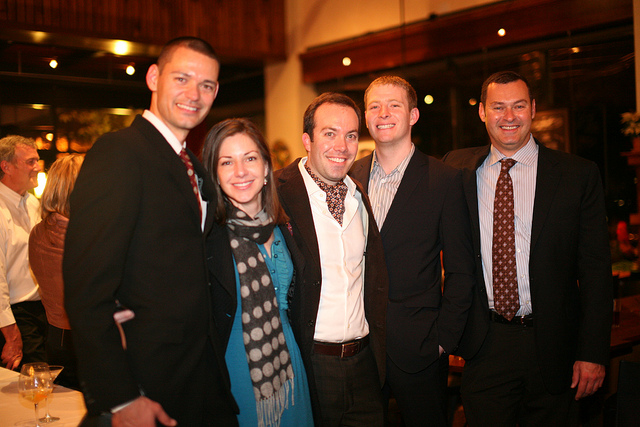How Organizational Fit Impacts Workplace Stress
 [We’re pleased to welcome Jeremy Mackey. Jeremy recently published an article entitled “Do I Fit In? Perceptions of Organizational Fit as a Resource in the Workplace Stress Process” in Group & Organization Management with co-authors Pamela L. Perrewé and Charn P. McAllister.]
[We’re pleased to welcome Jeremy Mackey. Jeremy recently published an article entitled “Do I Fit In? Perceptions of Organizational Fit as a Resource in the Workplace Stress Process” in Group & Organization Management with co-authors Pamela L. Perrewé and Charn P. McAllister.]
Pam Perrewé, Charn McAllister, and I began working on our paper entitled “Do I Fit in? Perceptions of Organizational Fit as a Resource in the Workplace Stress Process” because we were interested in whether or not perceptions of organizational fit could fundamentally alter employees’ workplace stress processes. We were able to collect three samples of data from diverse groups of U.S. employees across a variety of occupations and industries, including a sample of data comprised of respondents who were veterans of the U.S. military. Ultimately, we found evidence that perceptions of organizational fit can serve as a resource that reduces perceptions of job strain and increases motivation across a variety of organizational contexts as employees experience the workplace stress process.
We were surprised that some of the average reports (i.e., means) of the study variables we examined differed across
the three samples of data, but that the stress process and the relationships in our hypothesized model generally demonstrated similar effect sizes across samples. We concluded that although ratings of the individual components of the workplace stress process varied, the overall workplace stress process we examined appeared to stay mostly intact.
Many research studies examine perceptions of organizational fit as an outcome of workplace perceptions and behaviors, but we conceptualized it as a resource that could be an antecedent to workplace perceptions and behaviors. We hope our conceptualization of organizational fit as a resource will inform and encourage future research and organizational efforts to understand and manage employees’ levels of stress.
The abstract for the paper:
A large number of research studies in the stress literature over the previous 20 years have examined how organizational demands influence experienced stress; however, little research has examined how perceptions of organizational fit influence experienced stress and the stress process. In the present study, we use the conservation of resources (COR) theory to examine how perceptions of hindrance stressors, challenge stressors, and organizational fit (i.e., a resource) affect employees’ intrapersonal (i.e., job satisfaction and work intensity) and interpersonal (i.e., interpersonal workplace deviance and work-to-family conflict) outcomes through job strain (i.e., job tension) and motivational (i.e., vigor) cognitive stress processes. Results from three samples of data (nSample 1 = 268, nSample 2 = 259, nSample 3 = 168) largely supported the hypothesized model and suggested that perceptions of organizational fit can be a resource associated with favorable effects on employees’ stress processes. Thus, we contribute to the stress and fit literatures by proposing and demonstrating empirical support for a COR theoretical explanation of why perceptions of organizational fit are a resource for employees. The results are important because they help provide a broader view of the effects of perceptions of organizational fit on employees’ stress processes than offered by prior research and suggest that organizational leaders have the opportunity to help employees manage workplace stress by fostering perceptions of organizational fit. Implications of results for theory and practice, strengths, limitations, and directions for future research are presented.
You can read “Do I Fit In? Perceptions of Organizational Fit as a Resource in the Workplace Stress Process” from Group & Organization Management free for the next two weeks here. Want to know all about the latest research from Group & Organization Management? Click here to sign up for e-alerts!
*Coworkers image attributed to ryan harvey (CC)
Jeremy D. Mackey is an Assistant Professor of Management in the Raymond J. Harbert College of Business at Auburn University. His current research interests include abusive supervision, interpersonal mistreatment, stress, and meta-analysis.
Pamela L. Perrewé is the Haywood and Betty Taylor Eminent Scholar of Business Administration and Distinguished Research Professor at Florida State University. She has focused her research interests in the areas of job stress, coping, organizational politics, emotion, and personality.
Charn P. McAllister is a PhD student in Management at Florida State University. His research interests include social influence, self-regulation, and stress.





















































































